
Picture this: you’ve decided to give your website a much-needed redesign, and you’re finally happy with how it looks. But what if we told you that a visually stunning website isn’t enough to bring in the desired web traffic? Here’s where Search Engine Optimization (SEO) comes into play. In this blog post, we’ll unravel the secrets of seamlessly incorporating SEO strategies in your website redesign for maximum visibility, just like how the perfect seasoning elevates a dish from good to unforgettable. Say goodbye to being lost in search results and hello to soaring online success!
When redesigning your website, it’s important to consult with your SEO team to avoid any potential negative impact on search engine rankings and traffic. Make sure to benchmark your current site’s performance in terms of rankings and other relevant metrics, conduct a link audit, and create an SEO checklist that includes analyzing your current site, inventorying high-performing content, determining SEO goals, optimizing existing content, setting up 301 redirects, updating site architecture and page speed, and updating the XML sitemap. Additionally, make considerations for mobile responsiveness and user experience. Honoring these steps will ensure that your website redesign preserves existing rankings and traffic while improving them.
Preparing for the Redesign
Redesigning a website is not only about improving its appearance, but it’s also about improving its functionality, user experience, and overall efficiency. However, the biggest mistake most businesses make is overlooking SEO while in the redesigning process. If you fail to integrate SEO best practices in your website redesign plan, then you risk losing hard-earned organic traffic and valuable lead conversions. Preparing for website redesign with SEO as a priority can help your website rank high on search engine results pages (SERPs) while keeping or even magnifying your revenue. But how do you prepare for website redesign with SEO in mind?
Before commencing any redesign project, it’s crucial to consult with your SEO team to understand what is already working and what could be changed. Your SEO expert can provide you with an insight into what needs improvement, such as page load speeds, less mobile responsive pages, or problematic URLs that require redirections. Getting feedback from your SEO expert at the start will save you from having to strip down completed work.
Before starting a website redesign project, backing up records of crawl data of the current site will be useful when considering changes in page navigation and URL structures. Besides preserving the existing rankings and traffic of your site, understanding what is currently ranking well will enable you to incorporate this structure into your new design. Ideally, aim for an organized navigation structure without too much scrolling or clicking involved on the user end.
View website redesign like a journey; plan meticulously before embarking on it to avoid getting lost along the way. Websites like traditional landmarks are built brick by brick; if one part fails isolation doesn’t limit damage to just one part but instead affects more significant parts of a company’s overall success rate whose influence lies beyond what many might see or recognize.
Now that we have examined the first step to preparing website design, let’s look at another crucial factor.
Understand Your Audience and Goals
When planning your website redesign, creating a buyer persona will go a long way in understanding your target audience. Identify who they are, what problems they face, their preferences, pain points and the type of language that resonates with them. Do not alienate potential buyers by using overly technical language within your site; keep your tone human and approachable.
Understanding your audience also helps you identify the size and scale of content required on your platform. Quality content is essential for increasing organic traffic; hence identifying the balance between several pages versus patterns depending on user engagement will always remain a critical goal.
Imagine going to an empty restaurant where the food is good but the only customers in there are the staff. Website redesign is like designing such an empty restaurant: everything needs to be inviting enough to make new guests want to stay around for longer periods, but not too cluttered or oversaturated with material that they get overwhelmed upon arrival.
Benchmarking Current SEO Performance

Before you embark on a website redesign, it’s important to analyze your current SEO performance. This means understanding your website’s visibility in search engines, analyzing on-page metrics, and evaluating off-page factors. The insights you gain from this process will help you identify what’s currently working and areas that need improvement.
For instance, let’s say you have an e-commerce website that sells shoes. Conducting a website audit may reveal that your product pages are not ranking as well as category pages. This insight can inform your website redesign strategy by prioritizing the optimization of product pages for better visibility in search engine results pages (SERPs).
To benchmark your website’s current SEO performance, start by examining your site’s click-through rates (CTRs) and overall traffic trends. You can use tools such as Google Analytics and Google Search Console to obtain this information. These tools provide valuable insights into how users interact with your website and how search engines index and rank your pages.
You may find, for instance, that users tend to bounce off certain pages quickly or dwell for long periods on others. Analyzing this data can help you identify issues with user experience and website architecture that may be negatively impacting your SEO. However, keep in mind that using these tools can only highlight associations between various metrics and user behavior, but it won’t necessarily establish causality between the two.
Armed with a comprehensive understanding of your current SEO performance, you can now proceed to implement new strategies for improving visibility during the redesign process.
SEO Implementation During Website Redesign

Once you’ve established a baseline for SEO performance, it’s time to incorporate optimized strategies to ensure maximum impact during the redesign process. This involves both on-page and technical optimizations to help improve keyword rankings, traffic volumes, and user engagement metrics.
For instance, a website redesign should focus on optimizing headings, title tags, meta descriptions, and image alt tags. These optimizations help search engines identify the most important content on your pages and determine their relevancy to user search intent.
Technical SEO considerations are also vital for website redesign success. For example, broken links and redirects can result in error pages that may negatively impact both user experience and link equity. Ensuring that all URLs are appropriately redirected to their corresponding new locations during the redesign process is crucial for maintaining organic traffic and keyword rankings.
However, make sure to avoid excessive URL changes or restructuring, as it can lead to unnecessary indexing issues. Sometimes, technical optimizations may not necessarily translate into better overall results. For example, modifying a site structure may sometimes cause temporary drops in performance until Google reindexes the redesigned content.
Think of your website’s architecture as a library. The librarian needs to easily find the correct book amongst the thousands of books in the library. Likewise, search engines use navigation menus and internal linking structures to help understand what content is available on a website.
Incorporating optimized on-page and technical optimizations into your redesign process is crucial for maintaining visibility online while improving the user experience on your website.
- According to a study by Ahrefs, approximately 90.63% of online content receives no organic traffic from Google, emphasizing the importance of incorporating effective SEO strategies during a website redesign.
- A survey by HubSpot found that 64% of marketers actively invest in Search Engine Optimization, demonstrating the growing importance and popularity of incorporating SEO into website design and development.
- Research conducted by Moz revealed that top-ranking websites in search results receive nearly 33% of all clicks, highlighting the potential benefits of incorporating effective SEO measures during a website redesign to boost rankings and drive organic traffic.
Keyword Research and Architecture Optimization
Keyword research is the foundation of any SEO strategy, and it becomes even more crucial during a website redesign. Before starting to create new web pages or modify existing ones, it’s essential to understand how your target audience searches for your products or services and which keywords they use. By conducting thorough keyword research, you can identify the phrases and terms that generate the most traffic for your business and optimize your content accordingly.
To begin with, start by brainstorming broad categories of topics related to your industry or niche. Then use SEO tools such as On-Page.ai to identify related search queries, long-tail keywords, and key phrases that you may not have thought of previously. Once you’ve compiled a list of potential keywords, evaluate their search volume, competition level, and relevance to your business goals.
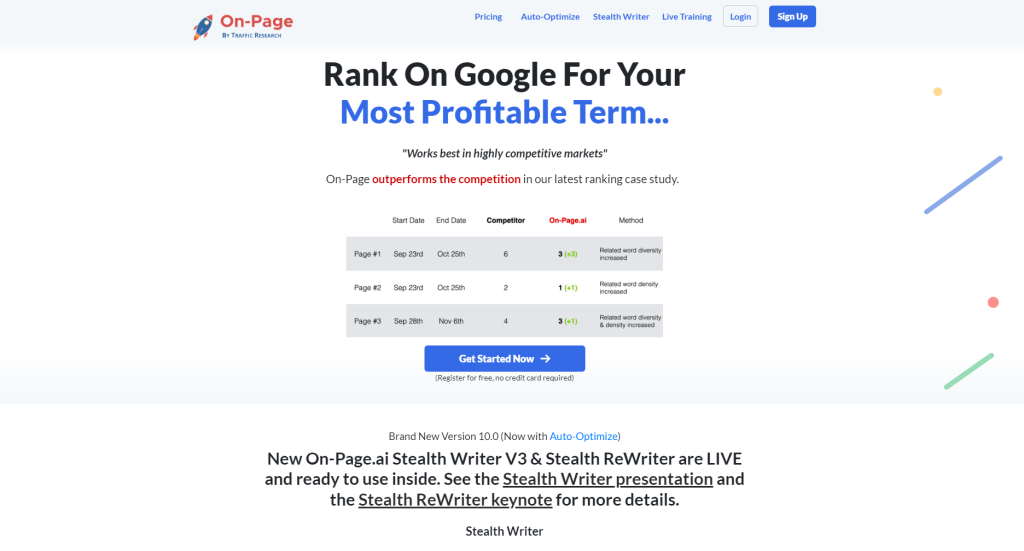
For instance, let’s say that you own a bakery in New York City that specializes in vegan pastries. A broad topic related to your business could be “vegan desserts,” which has over 18K monthly searches according to On-Page.ai’s keyword planner tool. However, that phrase is highly competitive, meaning that it will be challenging to rank for it organically. Instead, you could try focusing on long-tail keywords that are more specific to your bakery’s offerings while still generating traffic. For example, “gluten-free vegan donuts nyc” has lower search volume but less competition and targets an audience that is more likely to convert into customers.
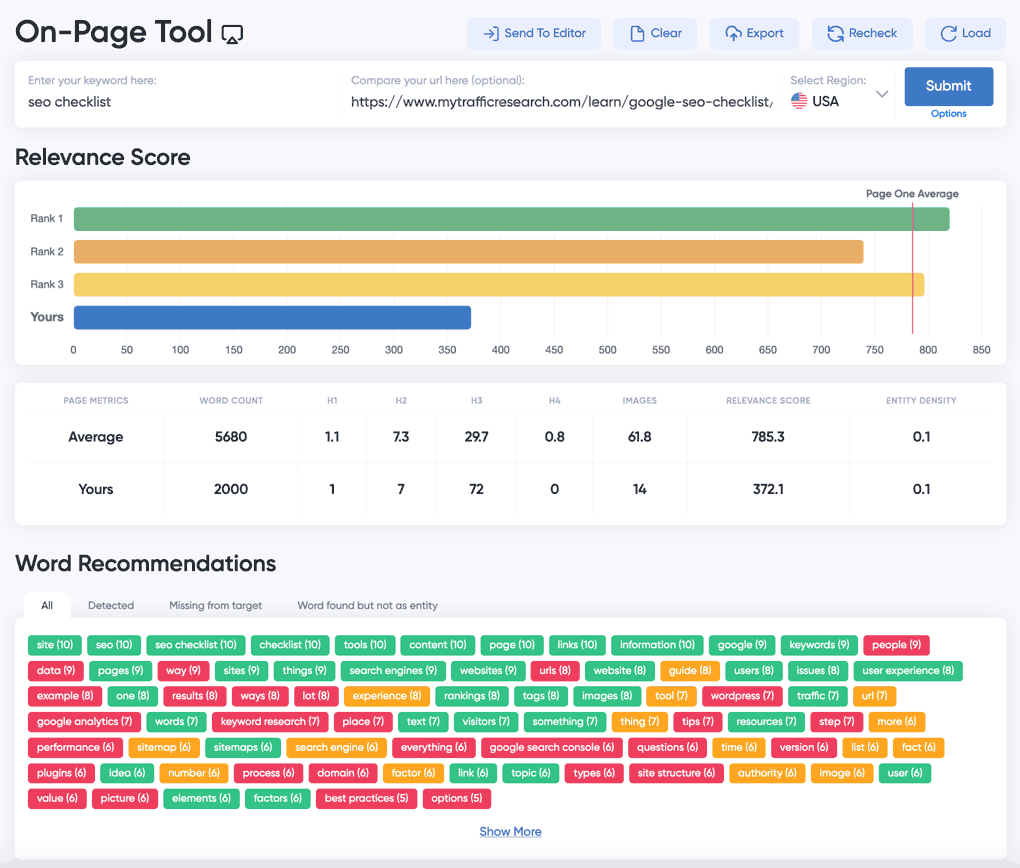
Once you’ve identified relevant keywords for your business and audience, it’s time to incorporate them into your website architecture and content strategy. The first step is to map out your website’s structure so that it’s easy for both users and search engines to navigate. There are several ways to do this, including creating a site hierarchy with main categories at the top and subcategories below them.
But site structure is only one aspect of technical SEO during website redesign. There are many other things to consider, as we’ll explore in the next section.
Technical SEO and Site Structure

Site structure can heavily influence how search engines crawl your website and understand its relevance to user queries. A well-optimized site structure makes it easy for search engine bots to understand the hierarchy and importance of each page and can improve your website’s overall search engine visibility.
One way to optimize your site structure for SEO is by creating an XML sitemap that lists all the pages on your website. An XML sitemap helps search engines find pages that may be hidden deep within your site’s architecture, ensuring that no important page goes unnoticed. In addition, it allows you to specify which types of content you want indexed and which ones you don’t, such as duplicate pages or pages with thin content.
Another critical aspect of technical SEO during website redesign is mobile-friendliness. Mobile devices now account for over 50% of all internet traffic worldwide, so having a responsive website design that adjusts to different screen sizes is crucial for both user experience and search engine rankings. Sites that aren’t optimized for mobile devices can suffer from high bounce rates, low engagement, and lower ranking positions in Google’s search results.
To ensure that your redesigned website is mobile-friendly, you should conduct a mobile-first design audit before launching. This audit involves testing your website’s user interface and functionality on various mobile devices to identify any usability issues or bugs. Some of the common areas that need attention during a mobile-first audit include text size, touch targets, loading speed, and images.
Think of your website redesign as building a house: before starting the construction process, you need to plan out the layout, foundation, and structure carefully. Similarly, when redesigning your website with SEO in mind, you need to carefully plan out your site architecture, content strategy, and technical elements. By paying close attention to these details, you can ensure that your website is optimized for both user experience and search engine visibility.
In the next section, we’ll explore post-redesign SEO strategies that can help you monitor your website’s performance and adjust your tactics accordingly.
Post-Redesign SEO Strategies

Once your website redesign is complete, it’s important to ensure that all of your previous SEO efforts are not lost. In fact, a site redesign can be an excellent opportunity to increase your search engine visibility if you apply the right post-redesign SEO strategies. Here are some things to keep in mind:
First and foremost, make sure that all of your old URLs are redirecting correctly to the new ones. This will help preserve your existing rankings and ensure that users are not hitting 404 errors on your site. If you’re changing your domain name, be sure to use a 301 redirect for each page on the old site to the corresponding page on the new site.
Next, focus on creating fresh content that aligns with your target audience and business goals. Remember that search engines love fresh content, so be sure to add regular blog posts, white papers or case studies in accordance with your content marketing plan. These new pages can also include high-quality targeted keywords to support your new SEO strategy.
While it’s great to have a variety of keyword variations in your content, avoid keyword stuffing at all costs. This spammy tactic will negatively impact user experience and turn search engines off of your website. Also consider adding relevant backlinks to authoritative sites within each piece of content as this will show an increased level of expertise in your industry.
Additionally, if you’ve changed any visual elements during the redesign, make sure they load quickly across all devices. Page load speed is a crucial factor for both user retention and search engine ranking factors. You can use Google’s PageSpeed Insights tool to evaluate site speed performance and identify ways to optimize loading time.
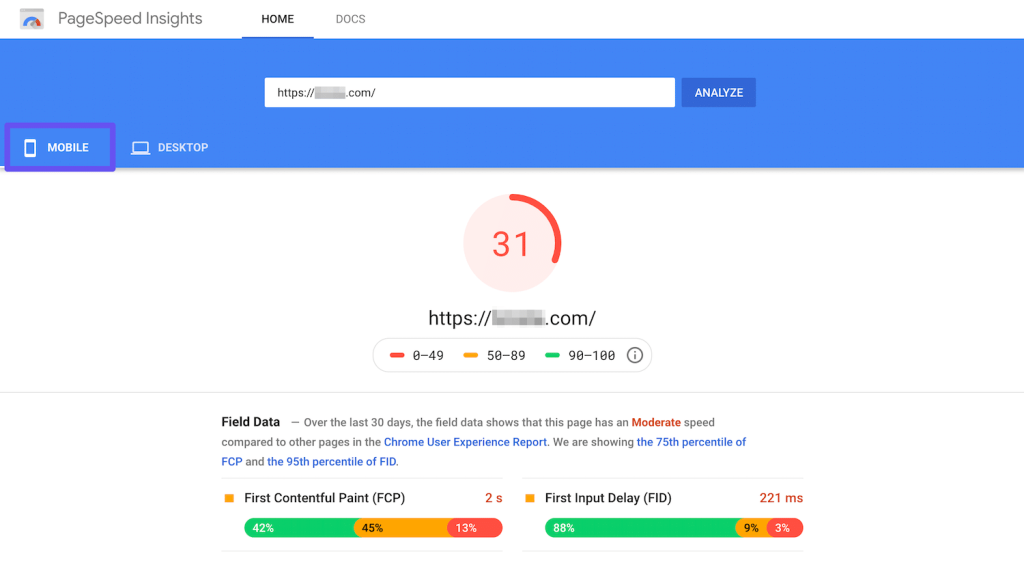
Finally, don’t forget about social media promotion. Social media channels amplify your content which increases online visibility. Think about your audience first, in terms of who they are and on what channels they normally engage. To increase post engagement, include a clear call-to-action on every social post. This will all help in generating traffic to your website, helping solidify new rankings.
To make sure that your post-redesign SEO strategies are working, you will need to monitor and adjust as necessary.
Monitoring Results and Adjustments
Once you’ve implemented post-redesign SEO strategies, the next step is to analyze whether or not they’re working for you. Use Google Analytics to track your search engine visibility over time and identify any significant fluctuations in organic traffic loss or gain.
If you notice low organic search traffic or ranking issues, do some digging to determine the root cause. Analyze page load speeds, meta descriptions, keywords between different pages etc. You may decide to modify some aspects such as pages load speed or internal linking to optimize for better results.
It’s worth noting that improvements don’t happen overnight and it may take weeks or months to see a significant difference after adjustments have been made. Don’t jump the gun and immediately modify things that aren’t working without considering reasons for why certain elements aren’t performing well. Remember the adage: “if it isn’t broken – don’t fix it”.
Continually evaluate key metrics like overall web page bounce rate, clickthrough rates for each page, plus goal completions on individual page levels using Google Analytics. Metrics such as user behavior data, can tell you where users drop off or where they convert. Information on what users are searching for give a great insight into which queries prospectives will need answers from more information within the site.
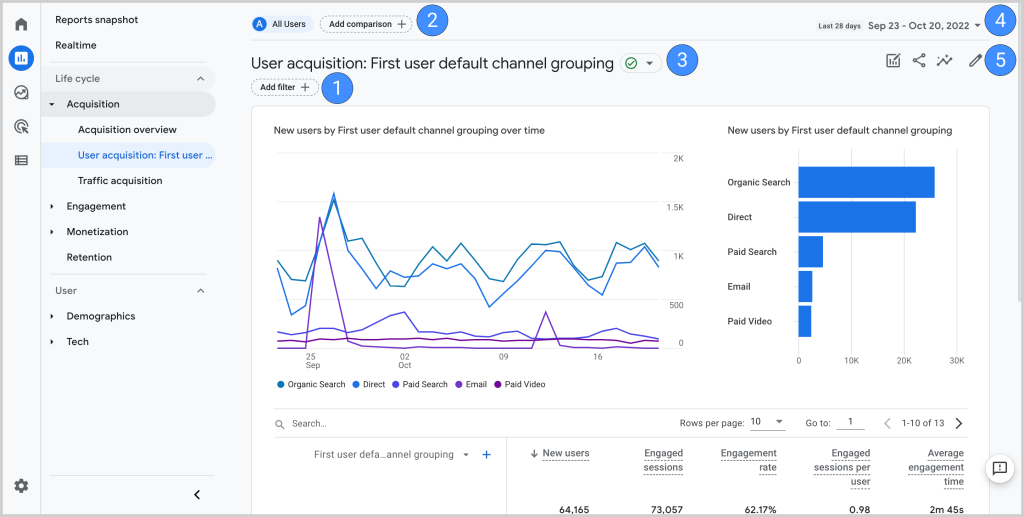
Think of optimizing SEO performance like tuning a piano: a master pianist knows annual tuning is required as weather affects how a piano sounds. Smaller optimizations might be made between annual tune-ups to ensure the tones remain pleasant to the ear.
Overall, monitoring results and adjustments of post-redesign SEO practices are key in maintaining or improving search engine rankings and website traffic.
Balancing SEO and User Experience in the New Design

Incorporating SEO into your website redesign is vital to achieving maximum visibility. However, it’s important not to sacrifice user experience in the process. When redesigning a website, it can be tempting to focus solely on SEO elements, such as keyword optimization and site structure, but this should never come at the expense of user experience.
User experience is one of the most critical factors in determining whether or not a visitor will engage with your website or bounce back to search results. A poor user experience can frustrate visitors and lead to high bounce rates, which can negatively impact your search engine rankings. On the other hand, providing an excellent user experience can lead to higher engagement rates and improved conversion rates.
For instance, when designing your website’s layout, you should consider how your design impacts user experience and navigation. Ensure that your website is easy to navigate to improve usability, making pages easy to browse for users. Remember that a good navigation system will make visitors want to stay on your website longer.
Another critical aspect of user experience is site speed. Slow-loading pages are one of the top reasons why users leave websites quickly without engaging with them. Google also considers page speed as a ranking factor; therefore, it’s important for both SEO and user experience purposes.
It’s easy to get carried away with optimizing technical aspects such as page speed or keywords for SEO success while neglecting valuable content for users. However, content remains one of the most important aspects regarding providing value to users so they will return time after time. For example, create unique content that offers insights into the topic matter rather than creating pages with little value just because you need pages optimized for keywords.
It’s additionally possible when fine-tuning your website’s design that you could change the initial message you intended from creating something which brings value to users and become too data-driven. It’s crucial always to remember who the target audience is when making redesign choices.
One possible way to balance SEO and user experience in your website redesign is by envisioning two color palettes – red for SEO elements, and blue for user experience aspects. Imagine that one of these colors should never be used exclusively without the other – like how red and blue make purple. Both colors are necessary components; SEO optimization will help you rank well on Google, while user experience will ensure visitors remain engaged on your website.
Balancing both SEO strategies and optimal user experience is key in creating a successful website redesign plan. With the AI-powered tools offered by On-Page.ai, not only will you have your page rank optimization taken care of, but also have a site tailored to your visitors’ needs. The use of specialized software can help identify and provide solutions for issues related to architecture, content, load times, mobile usage, and many others that often go unnoticed but significantly impact the user experience. So make sure you give On-Page.ai a try as it offers over 60 different optimization types from technical optimization to content optimization with its AI-powered SEO analysis tool!
Frequently Asked Questions Explained
How can keyword research be integrated into website redesign?
Keyword research is a critical aspect of website redesign to ensure maximum visibility and reach. In fact, it should be the first step to any web redesign project. By identifying the precise keywords and phrases that your target audience is searching for, you can optimize your pages for those keywords, resulting in better search engine rankings.
To integrate keyword research into a website redesign, start by auditing your existing content for relevant terms and then map them to specific pages on your site. Use tools like Google Keyword Planner, SEMrush, or Ahrefs to identify high-value keywords that are relevant to your business niche. Analyze competitive keyword data to understand gaps in their strategy and opportunities for differentiation.
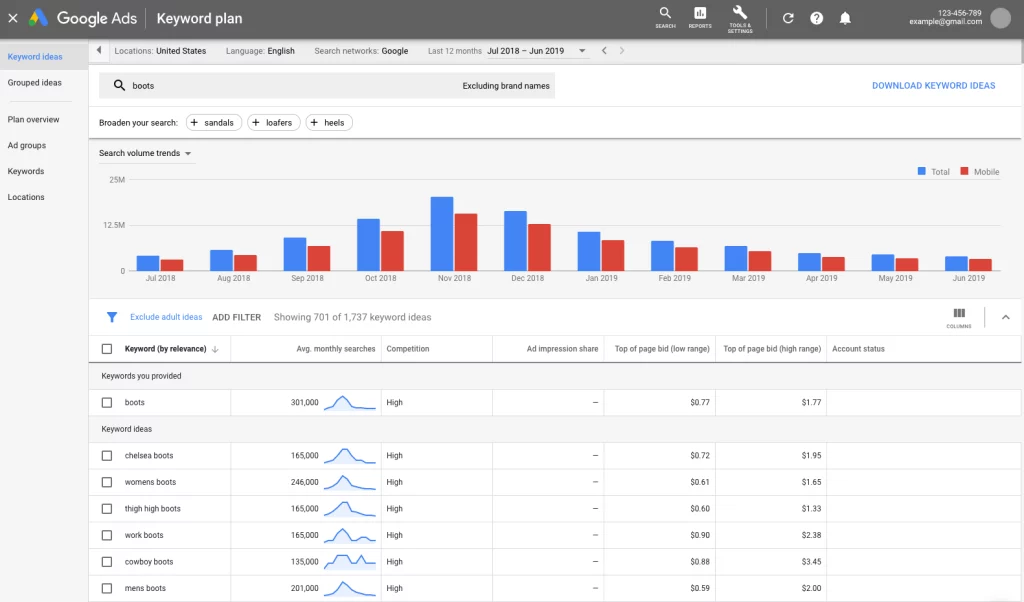
Implementing these measures can significantly impact website traffic and improve visibility. Recent studies suggest that SEO efforts can increase organic traffic by up to 2000%. Similarly, marketers who prioritize SEO achieve approximately 53% more website traffic than those who do not.
The case for incorporating SEO into your website redesign is strong. Ensuring the right keywords are part of the process means ensuring maximum visibility and profitability.
What role does website structure play in SEO and how can it be modified during website redesign?
The website structure plays a crucial role in SEO as it determines how search engines crawl and index your site. A well-structured site with clear and logical hierarchy makes it easier for search engines to understand the content and purpose of each page on your site, resulting in better visibility and higher ranking in search results.
During a website redesign, modifying the website structure should be a priority to ensure maximum visibility. This can be achieved by creating a clear hierarchy of pages and categories, using descriptive URLs that include relevant keywords, optimizing internal linking, using header tags appropriately, and ensuring that all pages are easily accessible and linked to from the main navigation menu.
A study conducted by Backlinko found that websites with shorter URLs, including target keywords, tended to rank better in search results. Another study from SEMrush revealed that internal linking is an important factor for successful SEO as it helps distribute link equity throughout your site.
Overall, optimizing website structure during a redesign is essential to enhance the visibility of your site in search results. By adhering to best practices and utilizing relevant statistics, you can increase your chances of ranking higher and attracting more traffic to your site.
What are the benefits of incorporating SEO into website redesign?
Incorporating SEO into website redesign can bring numerous benefits to your online presence, from improved visibility to increased traffic and sales. Investing in SEO during website redesign ensures that your website will have a strong foundation for search engines to crawl, index and rank your pages.
One of the key benefits of SEO is improved organic traffic. According to a study by BrightEdge, organic search drives 53% of all website traffic. By optimizing your website for keywords and content relevant to your target audience, you are better positioned to attract quality organic traffic.
A well-optimized website also leads to better user experience. Users are more likely to stay on your website if they find it easy to navigate and find relevant information quickly. This reduces bounce rate and increases engagement, leading to higher chances of converting users into customers.
Additionally, incorporating SEO during website redesign helps future-proof your website against any algorithm updates or changes in search behavior. By staying on top of SEO best practices, you can ensure that your website remains visible and relevant for years to come.
In conclusion, incorporating SEO into website redesign can provide numerous benefits such as improved organic traffic, enhanced user experience, and future-proofing your online presence. It is an investment that pays off in the long run, delivering increased visibility and higher ROI.
What steps can be taken during website redesign to optimize for search engines?
During a website redesign, there are several steps you can take to optimize your website for search engines. Here are some essential steps:
1. Keyword Research and Optimization:
Before starting the redesign process, conduct thorough keyword research to identify the phrases and keywords your target audience is searching for. Incorporate these keywords into your page and post content, as well as meta titles and descriptions.
2. Mobile-Friendly Design:
More than 50% of internet traffic today comes from mobile devices, according to Statista. It’s therefore essential that your website is mobile-friendly and has a responsive design that adapts to different screen sizes.
3. Fast Website Load Time:
Page load speed is an important ranking factor for Google. A faster site also enhances user experience, leading to better engagement rates. According to Google, 53% of mobile users will abandon a site if it takes more than three seconds to load.
4. Use Meta Titles and Descriptions:
Meta titles and descriptions appear on the search engine results page (SERP). Hence it’s important to use compelling copy while including relevant keywords.
By taking these steps during your website redesign, you can significantly boost your website visibility on search engines, consequently driving more organic traffic to your website with proven results.
How does website redesign affect current SEO efforts?
When you redesign your website, you can either harm or enhance its search engine optimization (SEO) efforts. For starters, a poorly executed redesign can hurt your rankings and traffic. Google’s algorithm takes into account various factors when ranking websites, and significant changes to your site’s structure, content, or code can have an impact on how search engines see and crawl it.
On the other hand, a well-thought-out and planned website redesign can provide excellent SEO benefits. By prioritizing technical SEO aspects such as site speed, mobile-responsiveness, and XML sitemap creation during the redesign process, you are setting yourself up for improved visibility in search engine result pages (SERPs).
In addition to technical aspects, the website’s content also plays an important role in its SEO. A website redesign is an opportunity to assess your current content strategy and make necessary adjustments. Adding fresh and relevant content through blog posts and updated landing pages can help attract more organic traffic to your site.
The numbers support these assertions. According to a study by HubSpot, companies that regularly publish blog posts receive almost three times more traffic than those who don’t. Furthermore, Google has made it clear that mobile responsiveness is now a critical ranking factor for websites as more than 60% of searches come from mobile devices.
In summary, a website redesign can positively impact your SEO efforts if done correctly. With careful planning and execution, you can create a user-friendly and high-performing website that ranks well in SERPs and drives organic traffic to your business.




